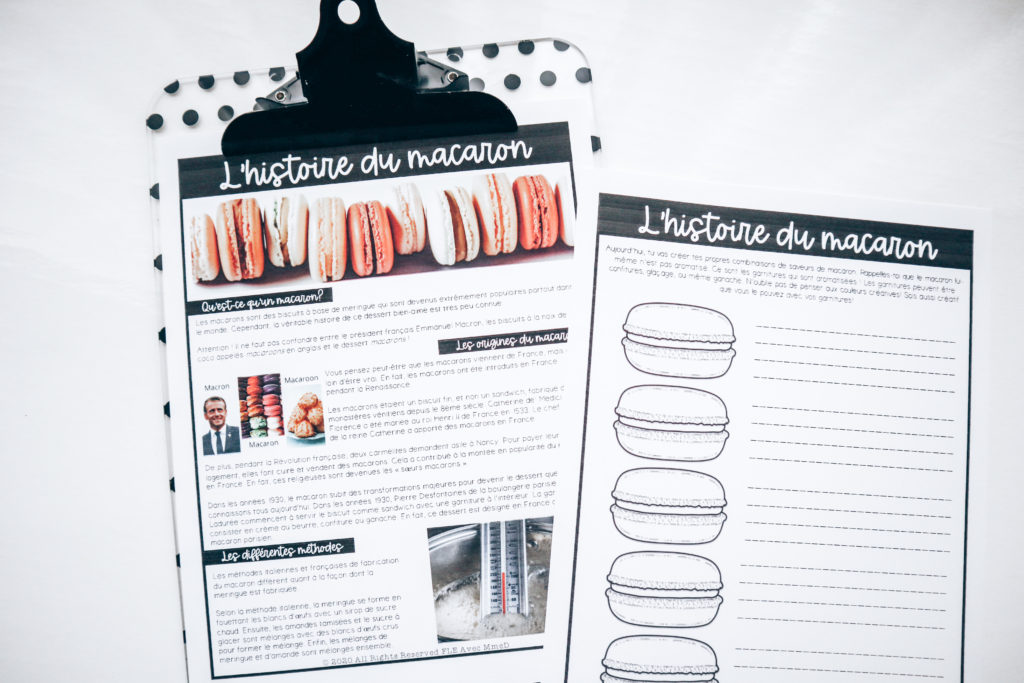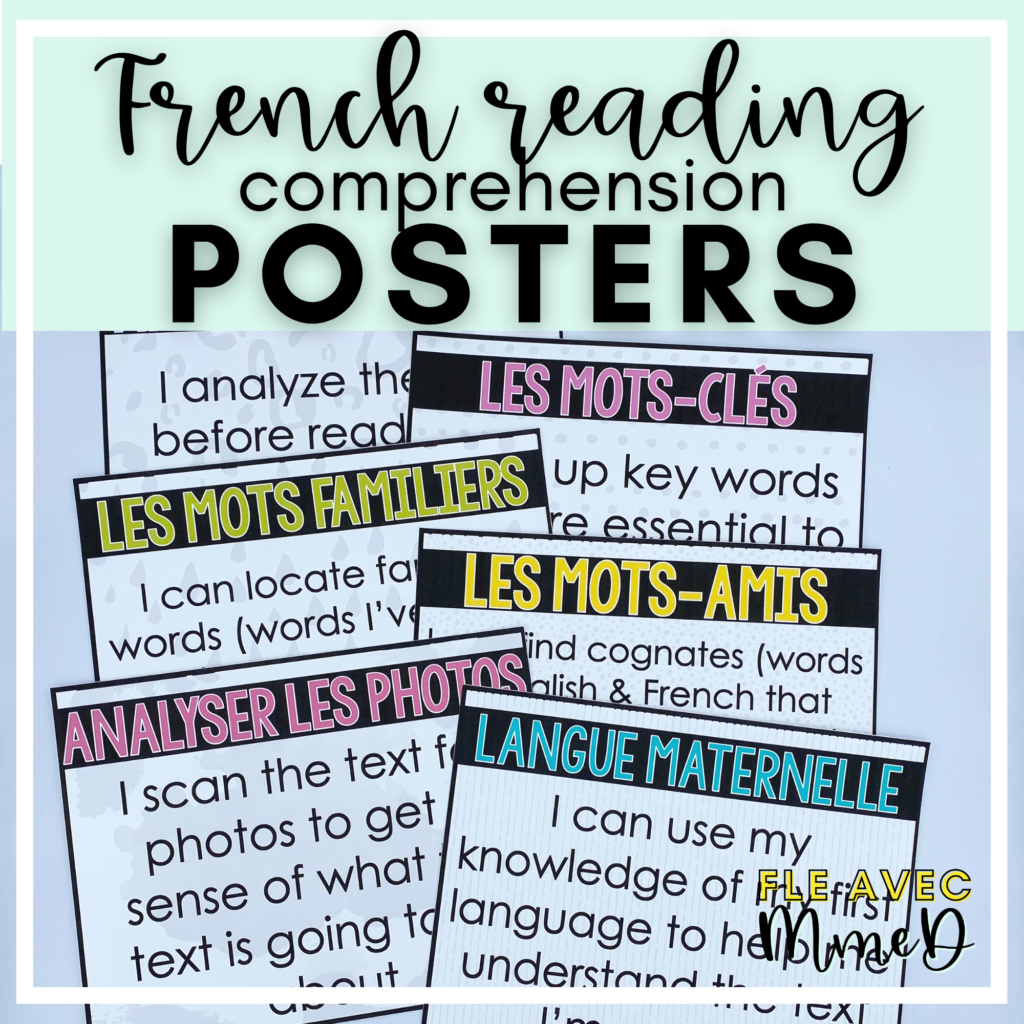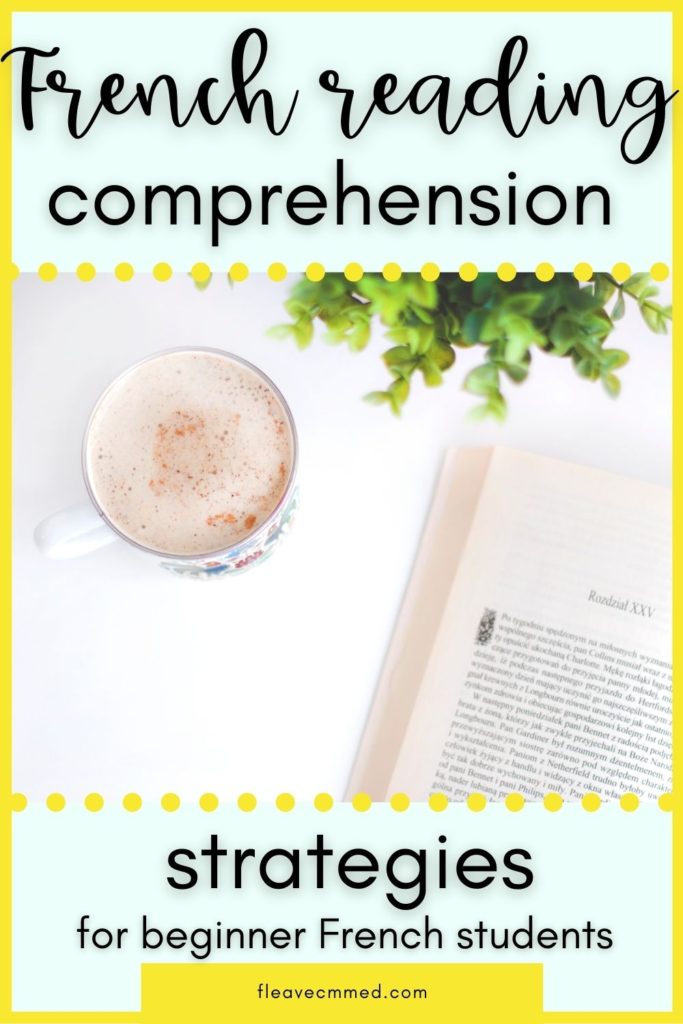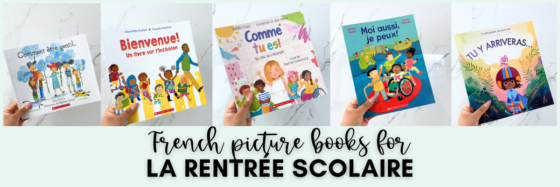
Picture this – you’re looking for interesting, engaging texts for your students to read in French class and you spend hours looking for the perfect text. Then, you find what you think is a good text, hand it out to your class and that ONE student looks at it and says “um I don’t speak French??”. Here are my tried and tested French reading comprehension strategies to prevent this from occurring!
Drop the 🙋🏽♀️ emoji below if the above situation has happened to you!
This was totally me in my first two years of teaching! I was finding either texts that were made for FSL students that made ME fall asleep OR extremely difficult authentic texts.
What problems do teachers frequently encounter when teaching reading comprehension in French?
- The text is extremely boring for our students
- It is too difficult for students’ level of French
- The article is too simple and bébé lala
- There is a lack of representation and diversity in reading comprehension texts
- Strategies are not taught to students beforehand to break down the text so it feels incredibly overwhelming

Today I am going to be sharing with you how I structure reading comprehension in my classroom. These reading comprehension strategies have been incredibly successful in my beginner French classes.
What kinds of reading comprehension articles should we pick?
I know that many teachers reach for reading comprehension articles when they think of what kind of text to read in class. However, please note that picture books also make fantastic texts. Parfois je suis un renard by Danielle Daniel is one that I love to read with my own beginner French students!
Most importantly, reading comprehension texts must represent the diversity in our classrooms and within the francophonie. It is no longer acceptable to only have texts with white characters. Your texts should represent a wide range of ethnicities, cultures, religions, and lived experiences.
Not only is this morally and ethically important, but this is also very engaging for ALL of our students.
Additionally, reading comprehension texts are an excellent way to teach all about francophone cultures, celebrations and traditions.
French Reading Comprehension Strategy #1 – Pré-lecture
The pré-lecture is perhaps the most important strategy when structuring reading comprehension in French.
1. Analyze the title & images
Have your students read the title and make predictions about what the text is going to be about. Have your students describe the images in the reading comprehension article or text with simple vocabulary they know.
2. Look up key vocabulary & highlight it in the text
Before introducing the text to students, I choose 10-12 vocabulary words that I know my students will not know.
Next, I have them look up what they mean in English. Then, I have my students highlight those words in the text itself with a specific colour.
I have these French posters available with all of these French reading comprehension strategies handy.

3. Highlight mots amis and mots familiers
Then, I get my students to highlight mots amis and mots familiers in the text in different shades.
| Mots amis | Cognates – words that are spelled similarly and have the same meaning in English and in French | |
| Mots familiers | Familiar words – words that they have previously learned in French class |
The purpose of mots amis/mots familiers is to build your students’ confidence and make the text more manageable.
French Reading Comprehension Strategy #2 – la lecture
1. Read Aloud #1 – out loud
The first time your students fully read the text, have them read it loud in partners or groups of 3. The purpose of this initial read aloud is practicing pronunciation and just getting a general sense of what is being said.
2. Read Aloud #2 – breaking down the meaning in the reading comprehension article
During the second read aloud, have your students pause at the end of every small paragraph (3 sentences or so) and ask them to orally summarize the significance. This activity should be done based off of what they understand.
Reassure your students that this part is meant to be difficult. Remind them that they do NOT need to know every single world in order to understand the meaning.
Do we understand every single word in English medieval literature? Nope! I also tell students that this used to happen to me with articles I read in university in the English language — articles written recently!
Additionally, instruct them to look up any words that are important for them to understand the meaning. Questions I ask my students to guide this particular piece of the process :
How will you know which words you need to look up?
- Look up words that repeat several times – this indicates that they are important
3. Read Aloud #3 – read with the class
Finally, we read the text out loud together as a class. In my class, I have a student read one-two sentences and then they are responsible for explaining what it means to the class.
In fact, this part holds them responsible during the first two parts and ensures that they actually do the work!
French Reading Comprehension Strategy #3 – la post-lecture
Consequently, I like to end off the activity by having my students do a creative task or activity linked to their comprehension.
You can do these reading comprehension strategies with your own favourite texts. However, if you are looking for inspiration, check the texts I have written on la francophonie!
Have your French students learn about Francophone places

Explore the Francophone world with this bundle of French reading comprehension articles for low intermediate to advanced Core French or French Immersion students.
This bundle contains articles on the French overseas territories of Guadeloupe, Réunion, Martinique, Guyane française, and the country of Mauritius.
Your students will learn about where each Francophone region is located, basic facts about the region (capital, area, official language), the geography, climate, the people, and agriculture and economy.\
Seasonal French Reading Comprehension – Noël, Mardi Gras, Jour du souvenir
Explore the Francophone world and topics on la Francophonie while improving your Core French and/or French Immersion students’ French reading comprehension skills with this bundle of French reading comprehension articles.
This bundle features FIVE seasonal French articles for intermediate to advanced French students.
Topics include les origines de l’Halloween, the contributions of les dissidents antillais to WWII, and the Christmas traditions of the bûche de Noël and the fanal from Haïti as well as an article on Mardi Gras.

French Reading Comprehension Bundle on Francophone Cultures

Topics include Haitian Vodou, la tourtière québécoise, the origins of the Eiffel Tower, impressionism, and Parisian macarons.
Les fêtes culturelles – French Reading Comprehension Articles
The theme of this specific bundle is the cultural and religious celebrations of many Canadians. Les fêtes culturelles that your students will learn about are Vaisakhi, Diwali, Lunar New Year, Ramadan, and Caribana.

Les fêtes Francophones – French Reading Comprehension Articles

Topics include on Francophone celebrations. This includes Carnaval d’hiver, Festima, Festival du voyageur, Festival du bois & Tintmarre.
Francophone Monuments Reading Comprehension
Citadelle La Ferrière and Palais Sans Souci in Haiti, la Grande Mosquée de Djenné in Mali, la Citadelle de Québec, Les Catacombes de Paris, and le Panthéon de Paris. Learning about historic monuments is a fun way to learn about la Francophonie.

Francophone Colonial Injustices French Reading Comprehension

This is a French reading comprehension BUNDLE on colonial injustices that occurred during the French Empire. These articles aim to educate Core French and/or French Immersion students on a series of injustices that occurred in the 20th Century that continue to impact the lives of francophones around the world.
The five topics your students will learn about are : la crise de chlordécone, les enfants de la Creuse, le massacre des Algériens à Paris, Vietnamese rubber plantations, and nuclear testing in French Polynesia.






